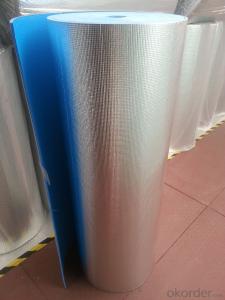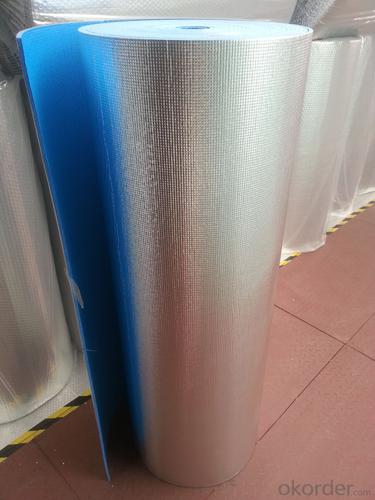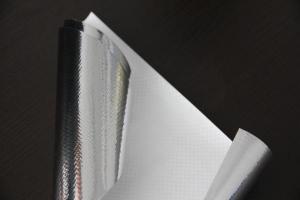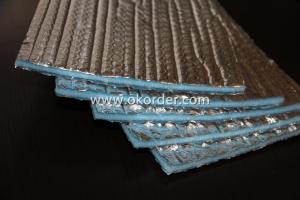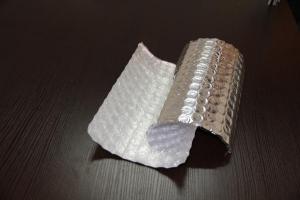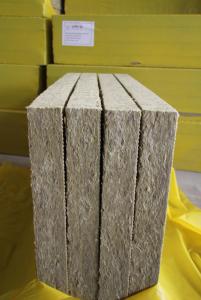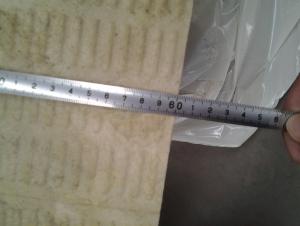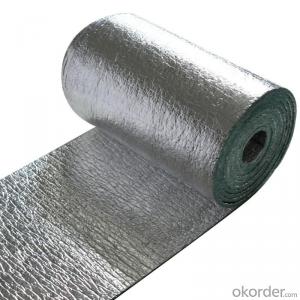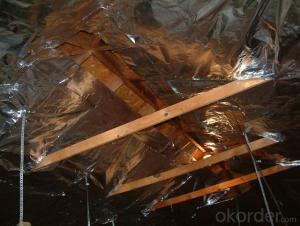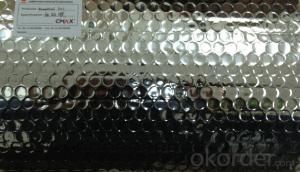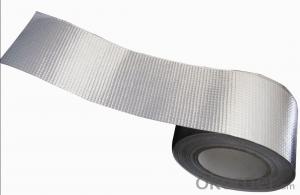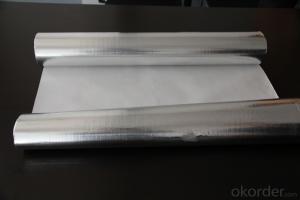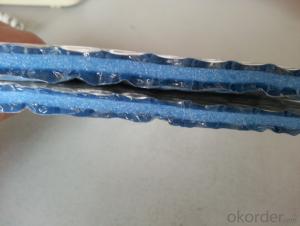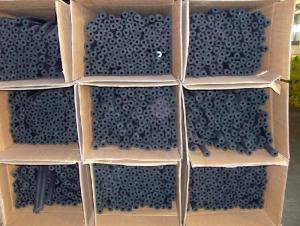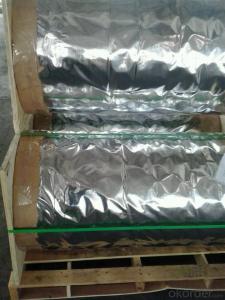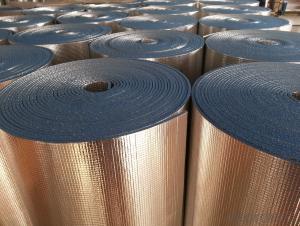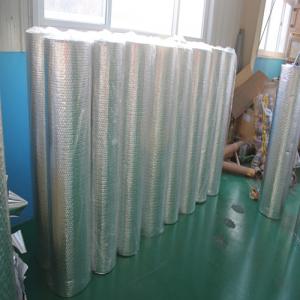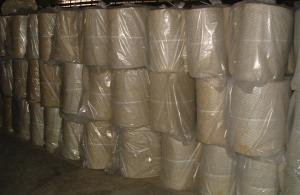Aluminum Foil Roofing Insulation Building Material
- Loading Port:
- Shanghai
- Payment Terms:
- TT OR LC
- Min Order Qty:
- -
- Supply Capability:
- 12000 m²/month
OKorder Service Pledge
Quality Product, Order Online Tracking, Timely Delivery
OKorder Financial Service
Credit Rating, Credit Services, Credit Purchasing
You Might Also Like
aluminum foil building material is an environment friendly product which has good sound absorption and insulation properties. The outer layer of PET provides excellent abrading and tears resistance. The middle layer of bubble shows strong ability in barrier of moisture and oxygen, reduction and insulation of sound. The middle layer also has the advantages like reflecting light and heat and stopping the penetration of ultraviolet radiation.
Reflective aluminum foil insulation pictures :
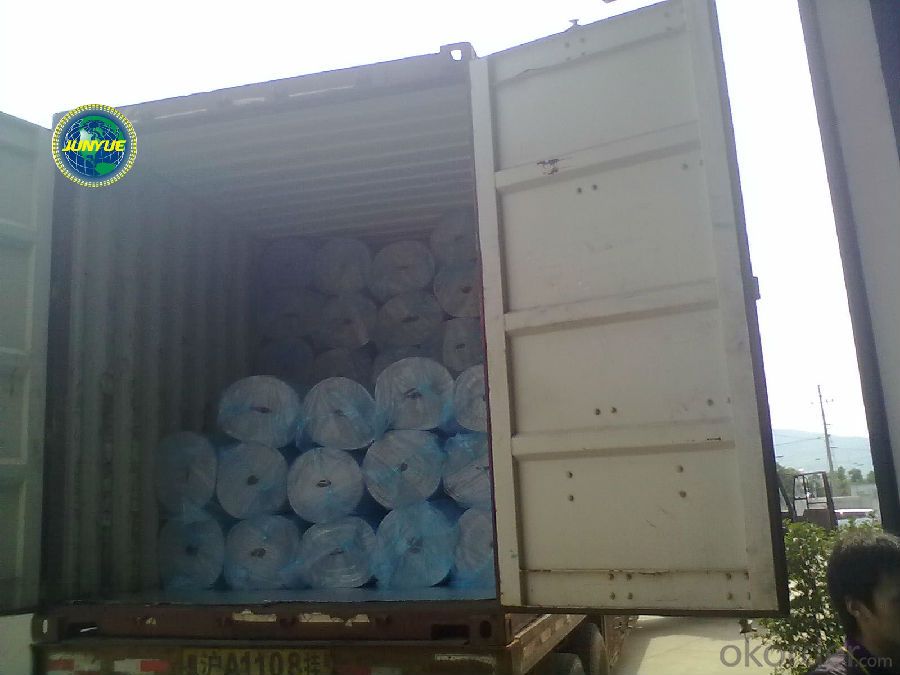
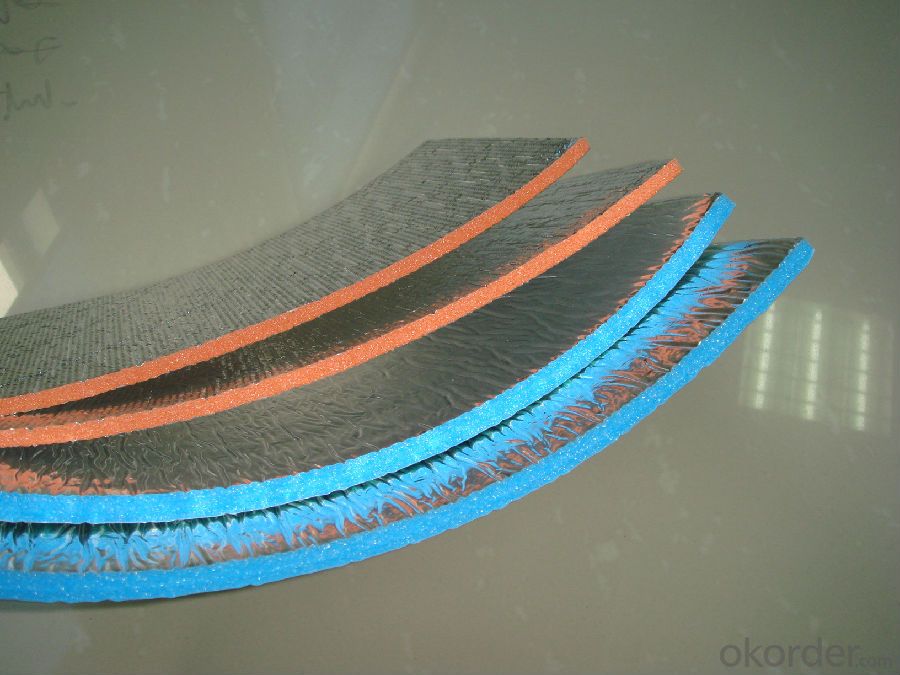
- Q: I know you're not supposed to directly insulate the roof due to the roof getting super heated in the summer, but my walk-in (actually, more like "crawl in") attic is very hot in the summer and very cold in the winter. Is there anything I can do to improve efficiency? I can't help but think I'm wasting a lot of energy just to keep my roof lasting a little longer.
- You can avoid the condensation problem by simply leaving a minimum 2'' gap between the roof and the insulation. You need to fix battens on to the rafters ( at least 2'' from the tiles ) and then fix blanket or rigid insulation tight between them. The battens will maintain the air space. You then need to fix a vapour barrier over the whole thing and finish with plasterboard. No small job to do it properly ! ps you need to check the condition of the roof before you start and fix any loose tiles etc Alternatively, turn the heating up and wear a thicker sweater.
- Q: I am specifically considering the re-roofing of a an older home where rafters were made with 2x4 or 2x6 and the rafter space (and possibly the attic space) does not allow sufficient space for insulation and proper ventilation behind the insulation. The old layers of roofing have to be removed in any event. At this point I am considering applying insulation boards on the existing sheathing and then a new layer of sheathing before the new roofing material. (similar to a SIP: structural insulated panel) The two issues I am concerned with is that the insulation can act as a vapor barrier. Would condensation potentially rot the lower sheathing. How is this avoided in SIP roofing panels? The second issue may be with fire regulations.
- Good question and I do not know the answers. For the fire issue, call your local fire department and chat them up. Then call your building inspector and talk with him. If he's been around awhile he may have seen it done before and have some information on how it has worked out or what are must do's.
- Q: ... building code max. (R-50)???
- All the answers are OK, BUT nobody has said anything about the over hang of the house. This is not insulated and when the water runs off it comes to the roof edge and then freezes. To get away from this do what I did and move to Florida, If that is not possible get the special heat tapes for roofs and install in a "V" configuration and that will help a hole lot. Hope that this helps you out.
- Q: Would it be worth forwarding the offer to the client? Is the difference that substantial?
- You don't want that. If he offers 3.5 instead of the required 3, that is a different story. Otherwise he should give you more material thickness to provide an equivalent R of 3. Yes, the difference can be substantial and I wouldn't forward it to the client. The smaller the R value of the entire roof sandwich the larger the difference it makes. Like the change from 5 mpg to 4 mpg is a 25% worsening in fuel economy, but a change from 100 mpg to 99 mpg is 1%. It will mess up the heating/cooling of the building and the mechanical systems might be inadequate. They could save money on the roof and complain how the building is too hot/too cold or the mechanical systems never shut off and their energy bills are too high.
- Q: do i leave air gap in attic roof for insulation?
- The best way to set up an attic is to put a vapor barrier under the rafters (before nailing on the gyproc), then put the insulation (fibreglas batts) between the rafters to full depth (10 or 12 inches). Soffit vents are installed under the eaves at the sides of the roof, and gable vents are placed near the peak of the roof at the ends. This allows for airflow resulting from convection, particularly important in the summer months to remove heat buildup in the attic. If the insulation is adequate, it will not only isolate this heat buildup from the inside of the house in summer, but will prevent heat loss to the attic in winter. (The airflow in winter will be minimal, but will remove any moisture/condensation that might collect otherwise.)
- Q: Foam and the new building technolodgy's are coming to New Orleans. The rebuilding is causing New Orleans to be the "Greenest City in America". Energy Efficiency and the proper buiilding techniques tak hold.
- foam is great but ugly as hell
- Q: The distance between knee wall and attic ceiling is about 6 foot. Could I push a perforated pipe between the rafters?
- That is an option. And there aren't many options.Not much is going to slide easily behind the insulation. I'm thinking --------------------. You are undoubtedly going to snag on roof nails coming through the decking. I don't know if they would hold up but the cardboard tubes wrapping paper comes on might work if you tape 2 together. and flatten and tape the end you will be pushing in first. cut slots with utility knife. I think your idea would work if you can afford the pipe. That's a tough one. When we convert attics we line those cavities with a styrofoam insulation chute end to end until we reach open ventilation-you probably know that by now. Give it a try.
- Q: Why would you not insulate between the rafters in an attic? I see a lot of houses with no insulation on the inside of the roof.
- A typical composite shingle would get too hot if you insulated the roof directly underneath it, decreasing life of shingle. You want good air flow in attic, insulate above the ceilings only.
- Q: we have liq. ammonia storage tank (capacity 40000 ton)having double wall & suspended deck.liq. NH3 stored at temp -33 degree cent. insulation (form ) being provided to annular space (wall ) but not on top roof . can you explain for exact reason.with regardsanvar shaikh
- Insulation is less necessary on the roof. The ammonia is mostly a liquid, and a liquid would absorb heat rapidly from tank walls. Above the liquid is vapor, and vapor absorb heat much less rapidly than liquid does, so insulation is less important there.
- Q: What's better- to lay out roof insulation in an old house or to get it blown in?
- anybody can do either.nothing to it.i prefer blown, because it isnt near as itchy.you can rent the blower from home stores, but it takes 2 people to run.
Send your message to us
Aluminum Foil Roofing Insulation Building Material
- Loading Port:
- Shanghai
- Payment Terms:
- TT OR LC
- Min Order Qty:
- -
- Supply Capability:
- 12000 m²/month
OKorder Service Pledge
Quality Product, Order Online Tracking, Timely Delivery
OKorder Financial Service
Credit Rating, Credit Services, Credit Purchasing
Similar products
Hot products
Hot Searches
Related keywords
